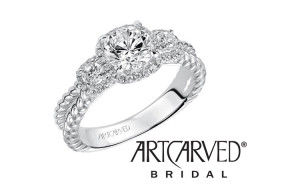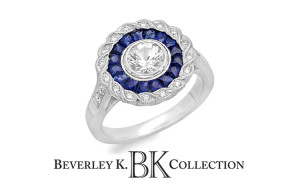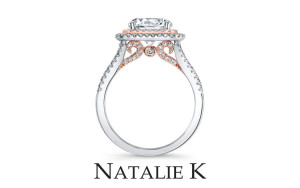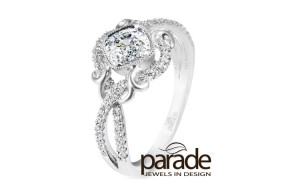Cut
The cut which demonstrates the shape of the stone. The most important factors in choosing a diamond stone is deciding on the shape that perfectly matches your style and looks beautiful on you. Your style may guide you to more traditional shapes such as the classic Round, Emerald or Asscher cuts or fancy shapes such as the Marquise, Heart or Pear. The classic and most popular shape is the Round Brilliant-cut diamond. Its 57 facets bring out the most brilliance, fire and sparkle of all the shapes.
If you’re looking for more contemporary style, consider the Princess-cut, the second most popular shape. Princess cut diamonds are square or slightly rectangular in shape with pointed corners and an array of intricate facets that increase the diamond’s inherent sparkle. For a timeless, elegant look, consider the Emerald-cut diamond with its long, lean lines. The rectangular cut, which has a relatively larger open table (top, flat surface) and fewer facets, highlights the clarity of the diamond more than any other shape.
The striking Asscher-cut, often described as a square emerald, evokes an art deco feel from the 1920s and ‘30s. Created at the turn of the 20th century, this shape is now experiencing a resurgence in popularity. The Radiant-cut is relatively scarce and appeals to those seeking a unique look. This cut combines the geometrical lines of the emerald shape with the sparkling brilliance of the round cut. Its trimmed corners are the signature characteristic of this shape. As with Asscher-cut diamonds, the Cushion-cut has been popular for more than a century. With a soft and romantic look, the Cushion-cut (or “pillow-cut” as it is often referred to as) has rounded corners and larger facets to increase the stone’s brilliance. The Marquise shaped diamond delivers drama with its brilliant cut and tapered points at two ends. This diamond, when worn as a ring, creates an elongated, slender look. Cleverly, it also maximizes carat weight, giving the appearance of a larger diamond than a round diamond of the same carat weight. The Pear shaped diamond resembles a glistening teardrop that combines the soft, rounded end of an Oval shape with the sharp, tapered point of a Marquise-cut. An interesting choice for the multi-faceted personality. Oval shaped diamonds appeal to those who like their classics with a little edge. Similarly to a classic round diamond, oval diamonds deliver a beautiful brilliance. The elongated shape adds an interesting twist to rings and accentuates the hand to create a slender look. The fancy-shaped Heart diamond is for the confident woman who is all heart. While sometimes selected for engagement rings, it makes a beautiful choice for pendants in fancy colors such as yellow, pink or red.







